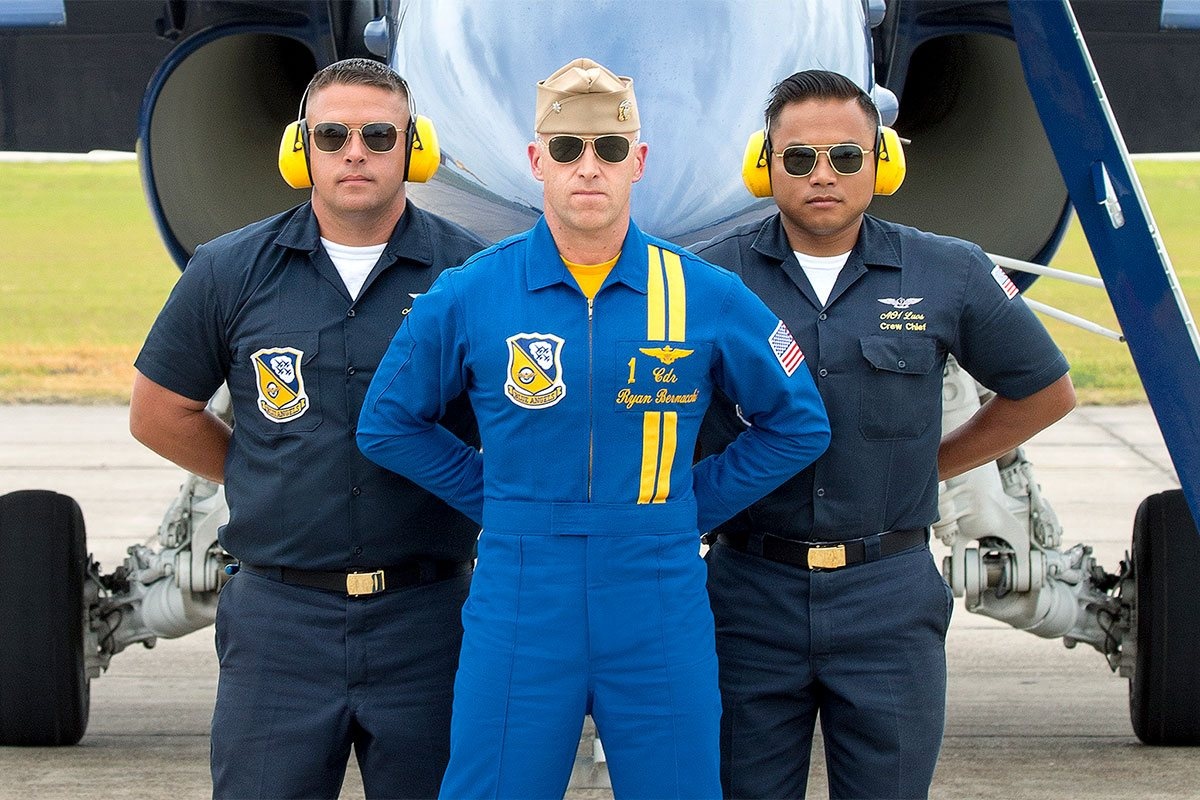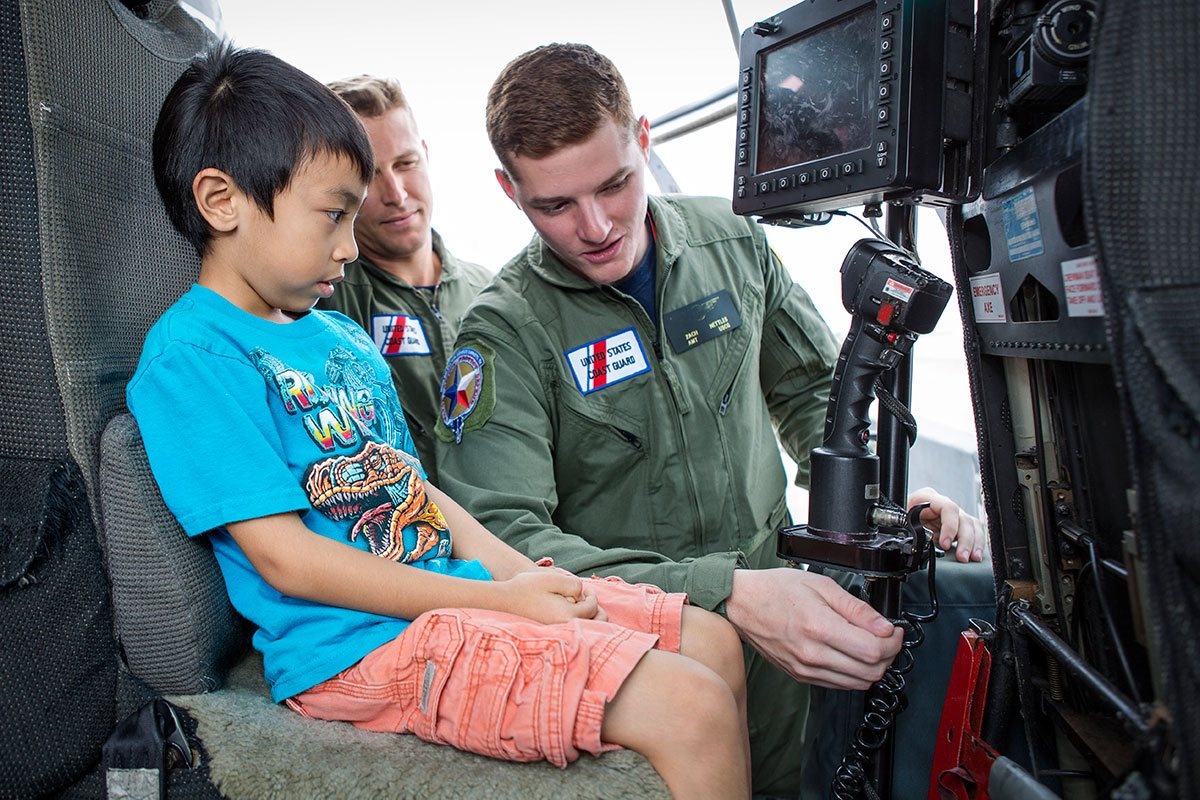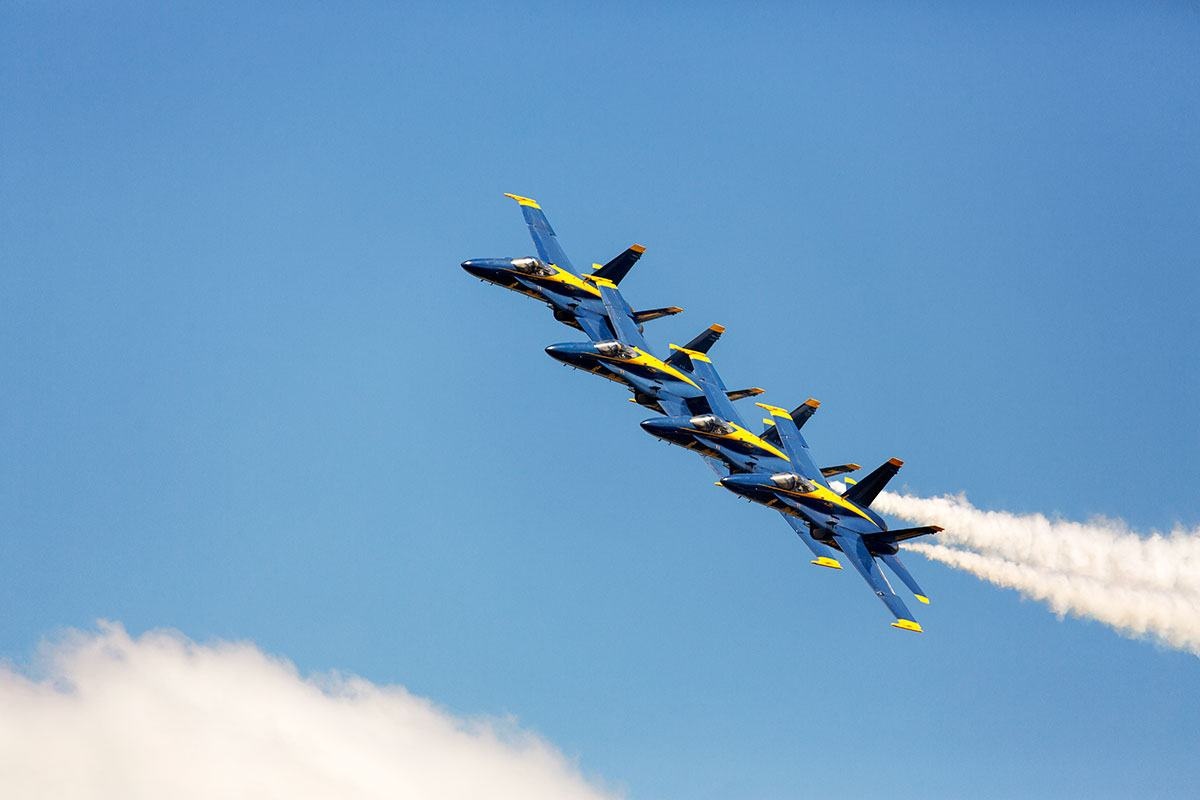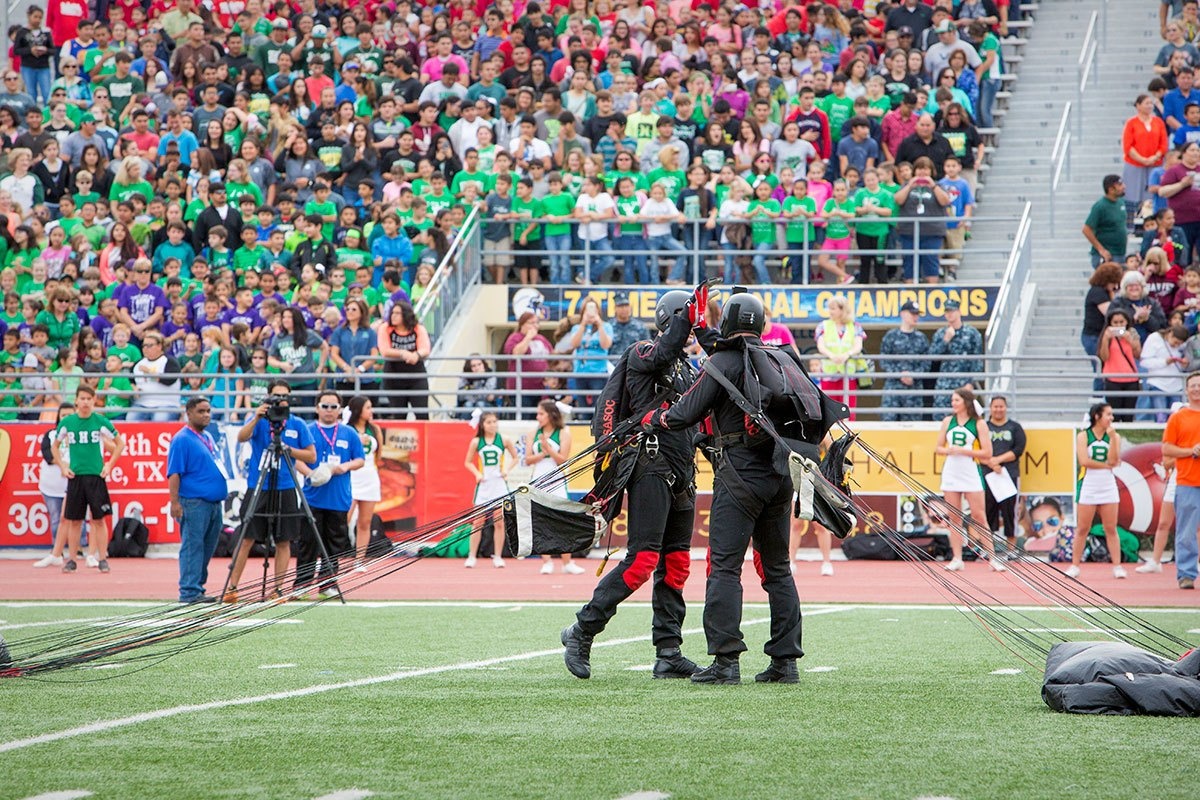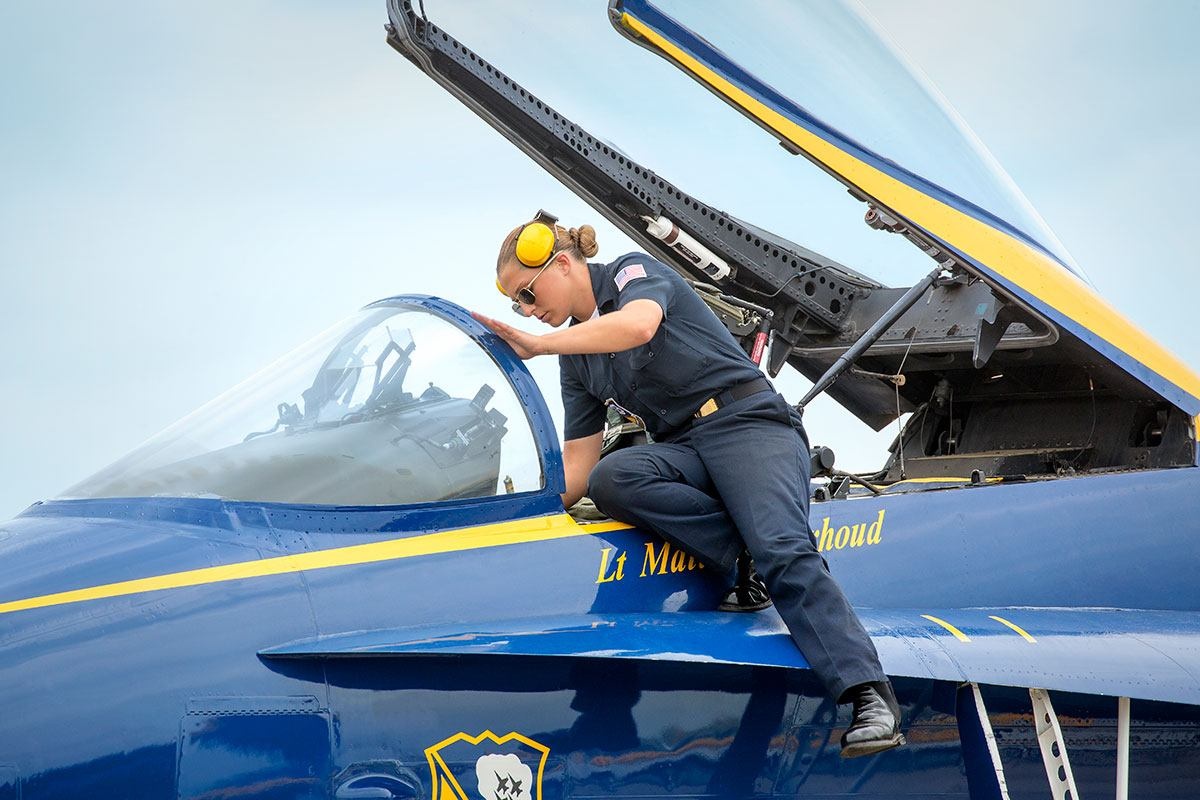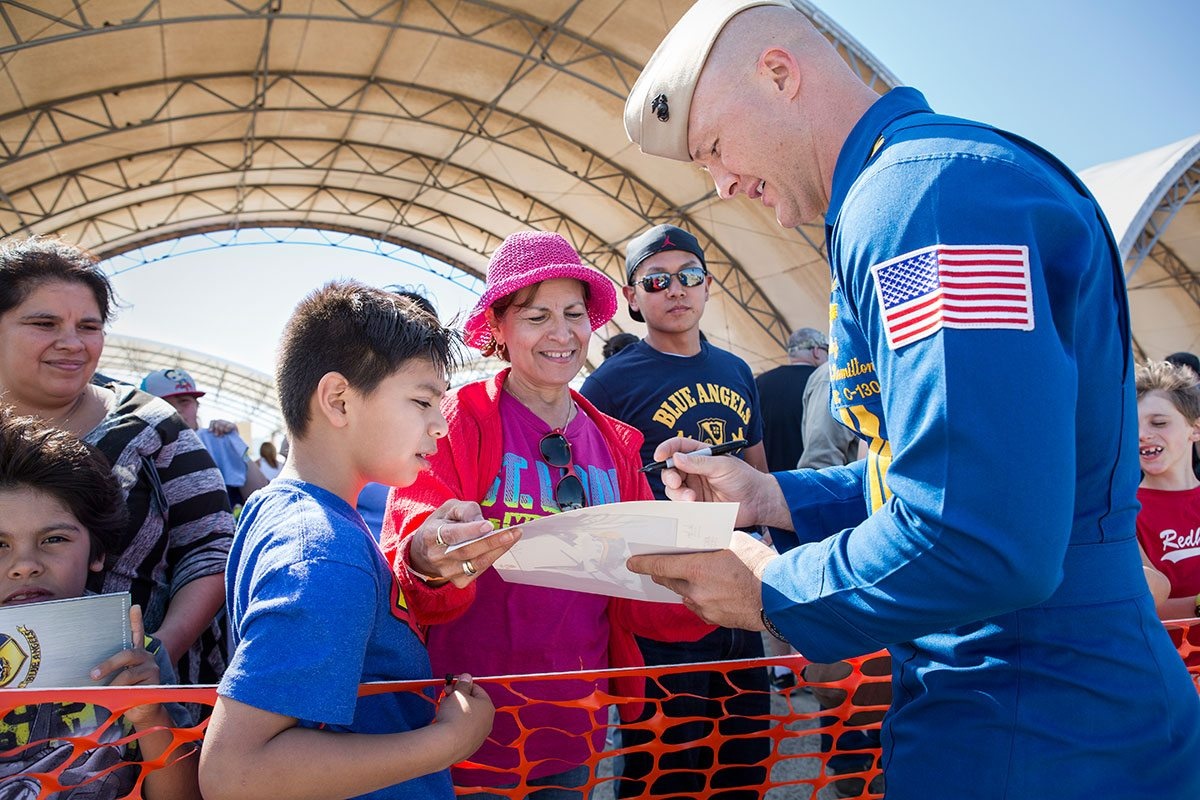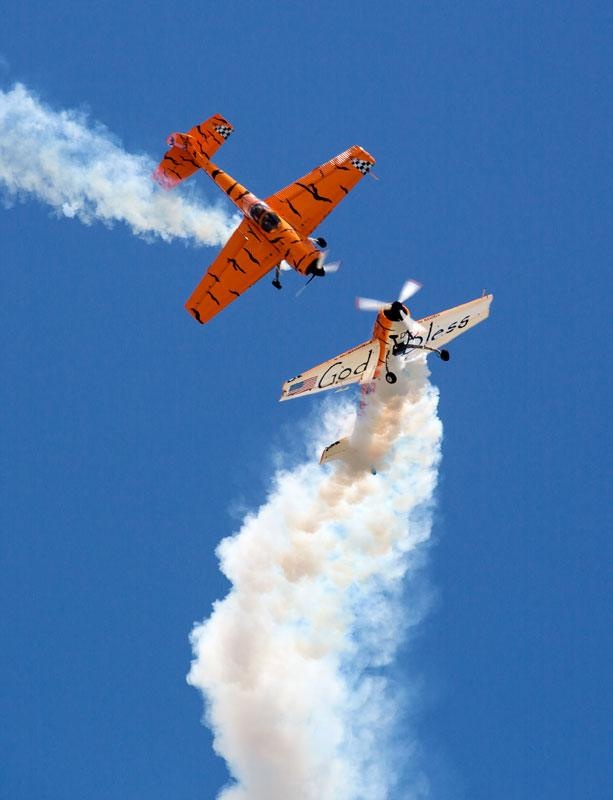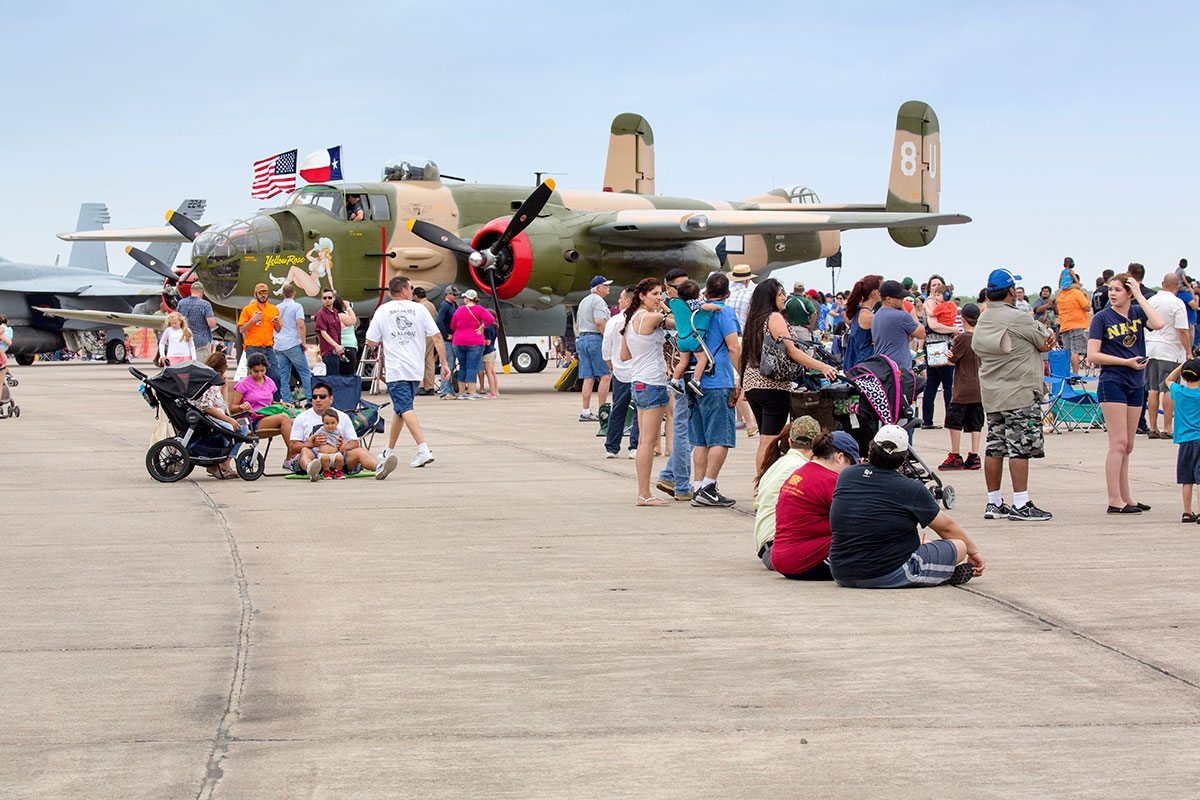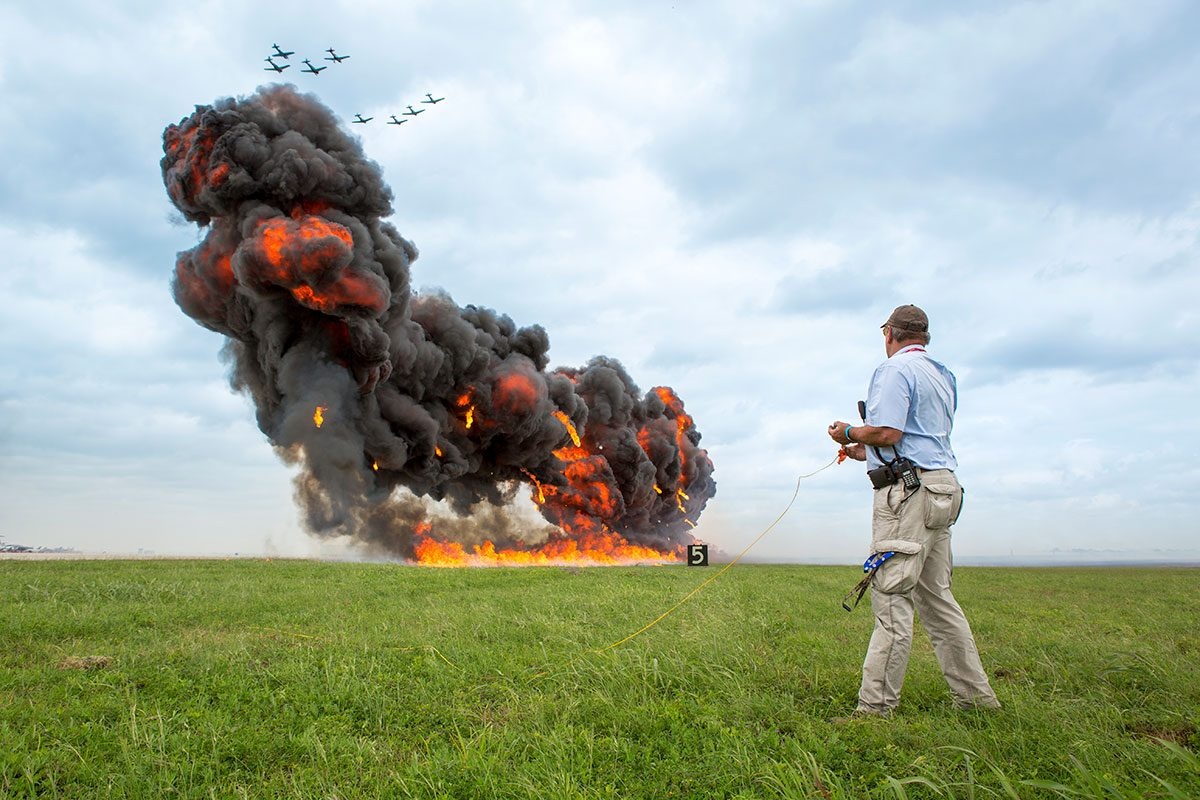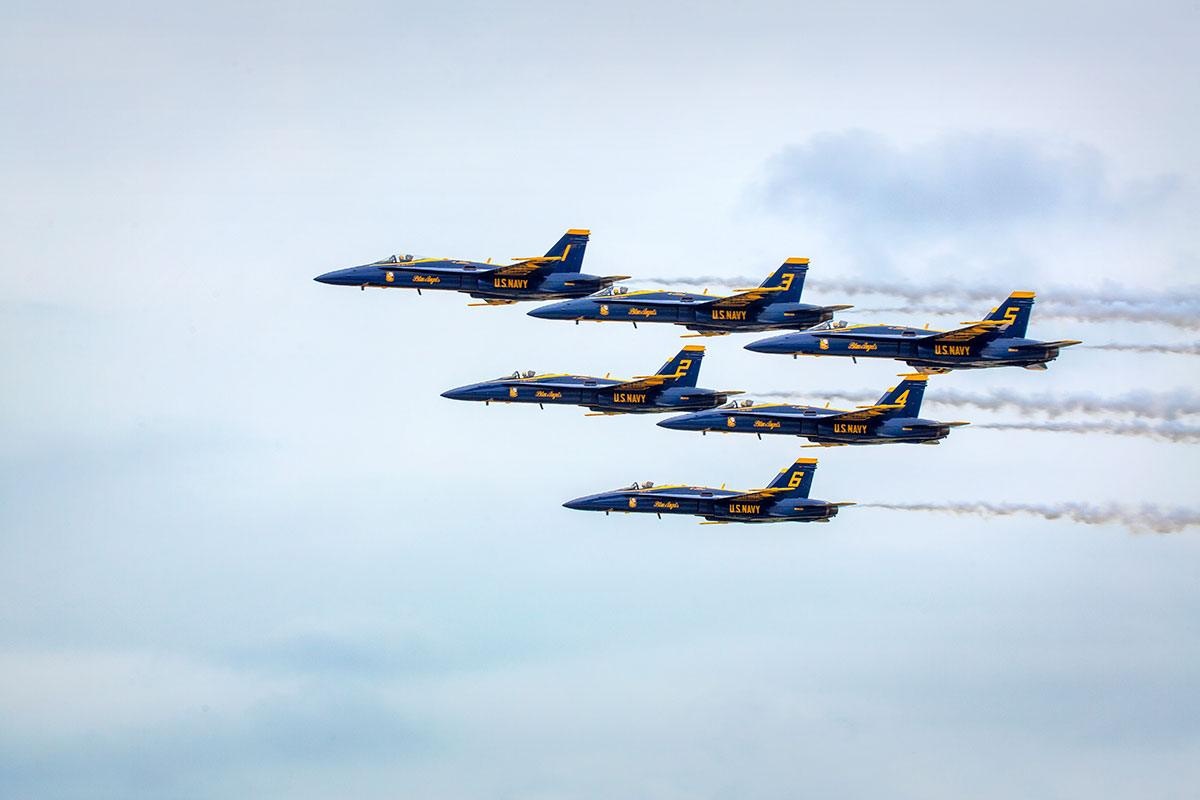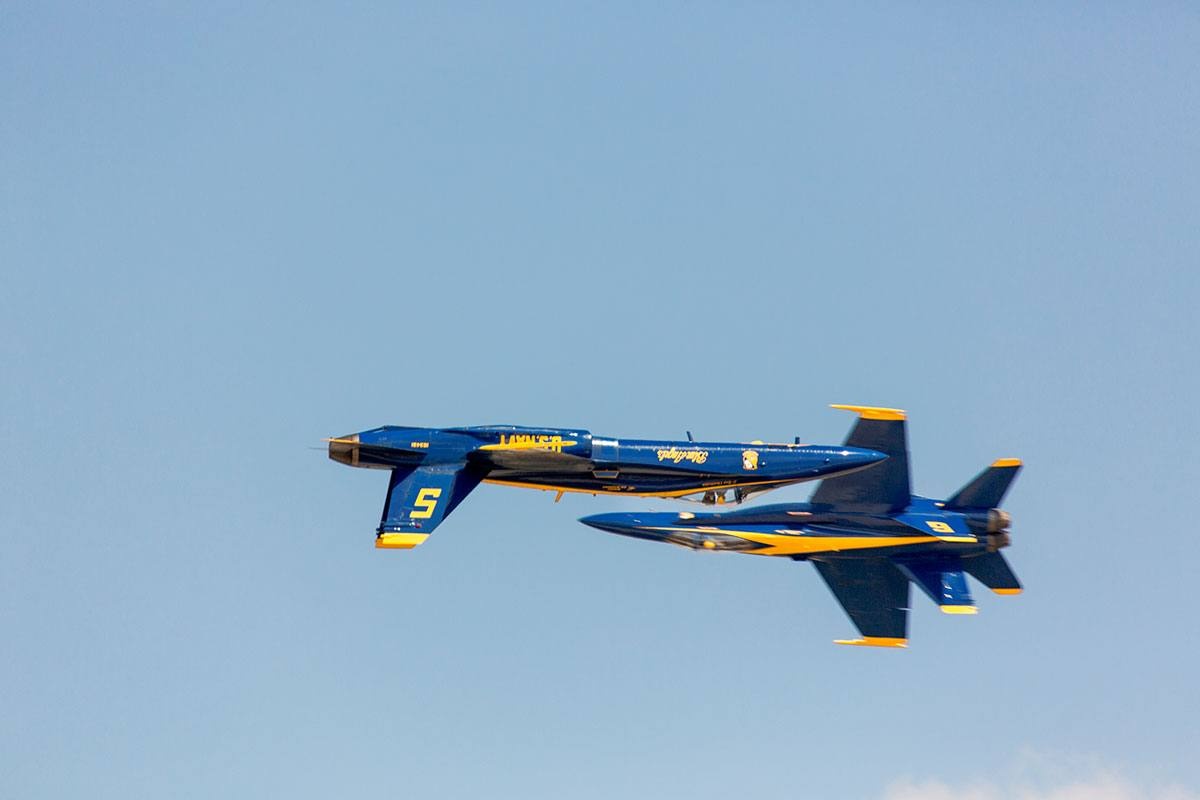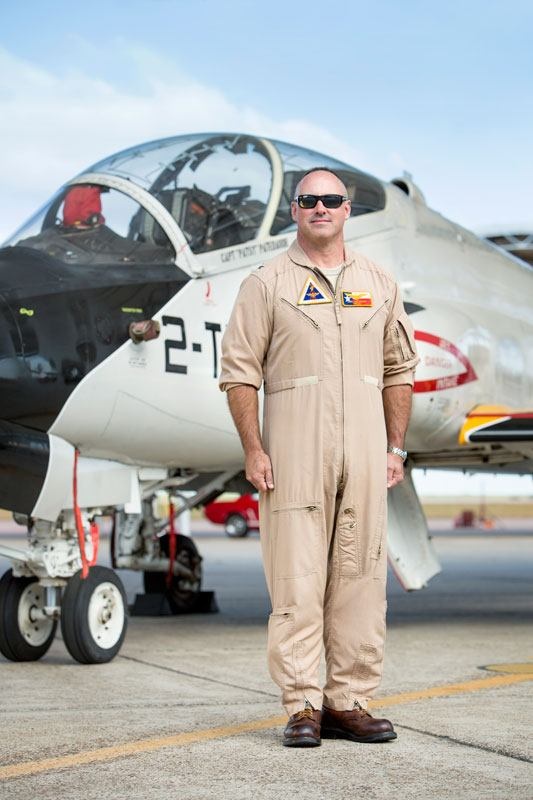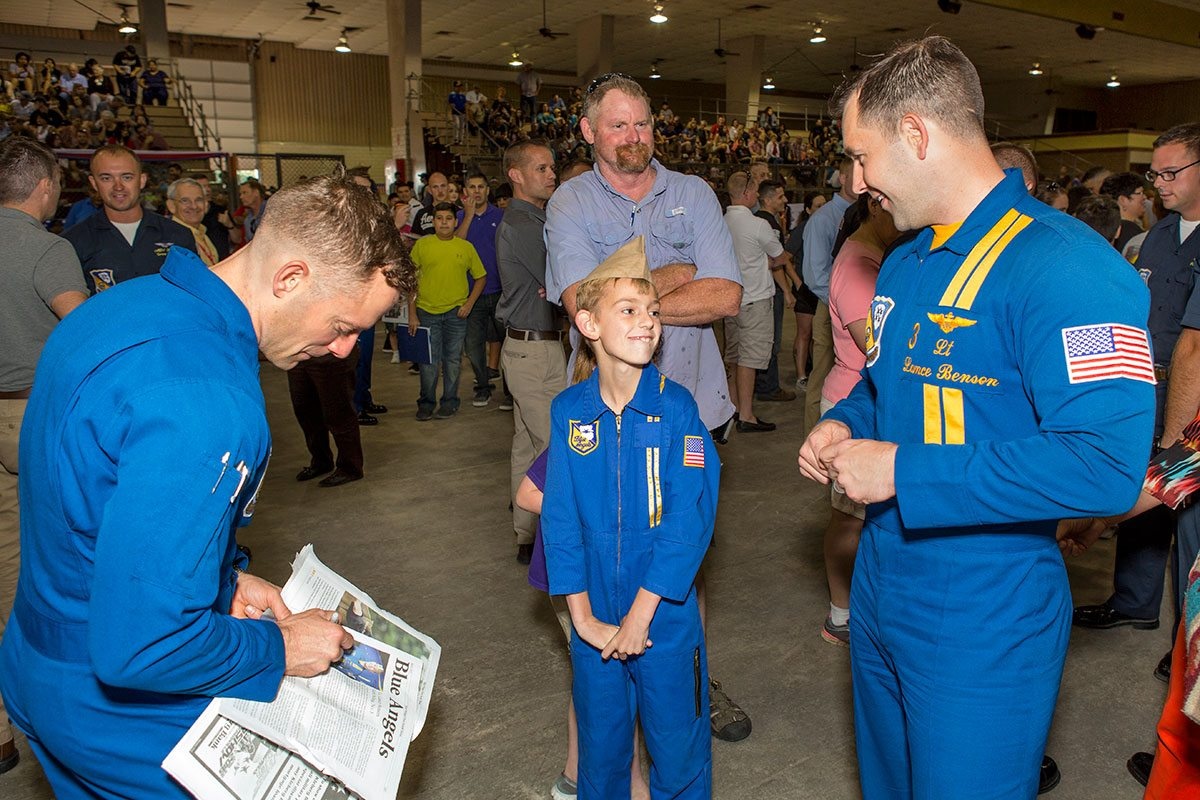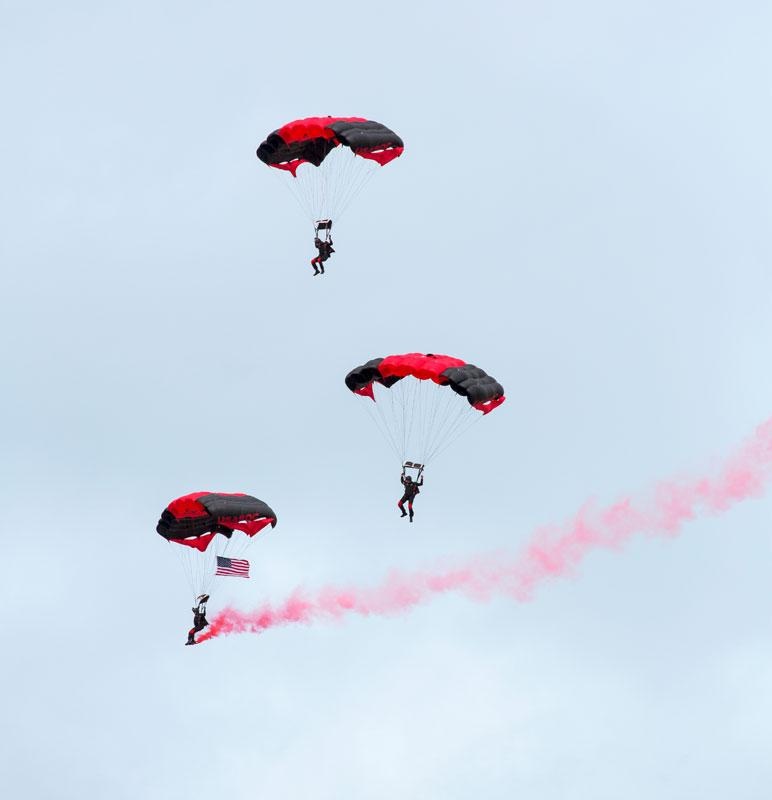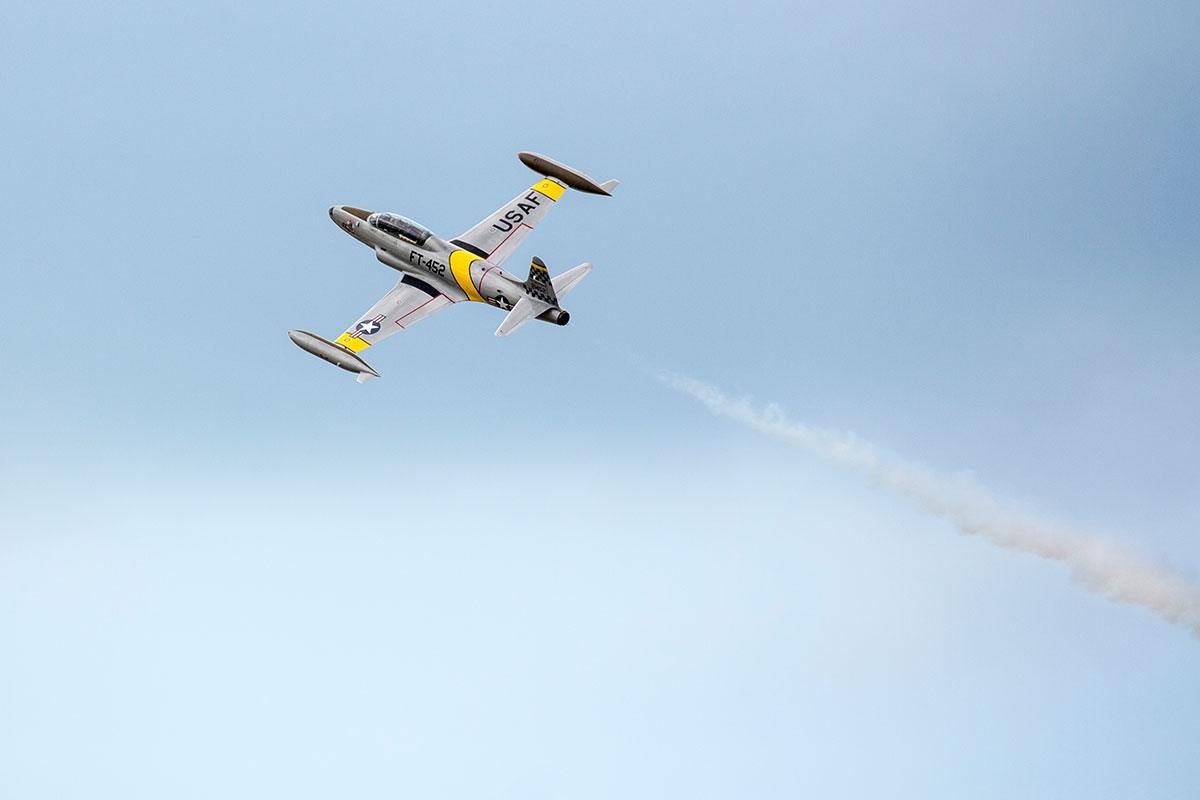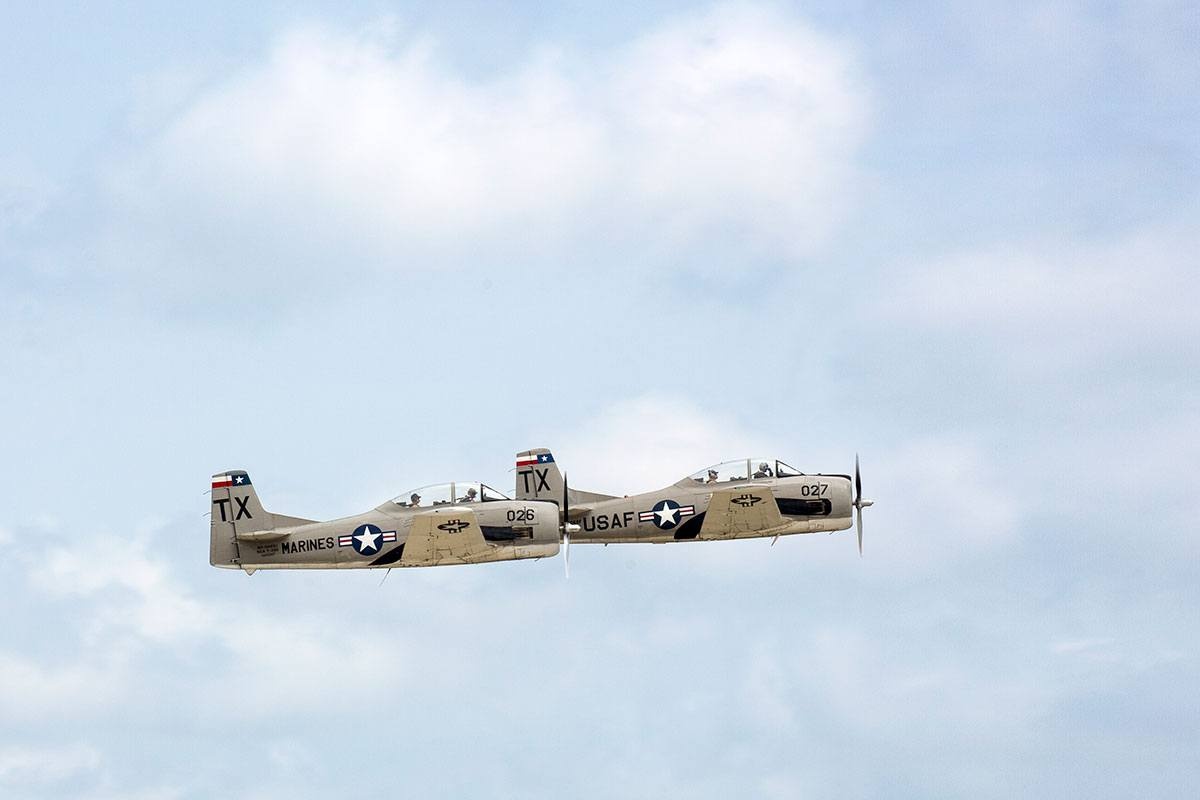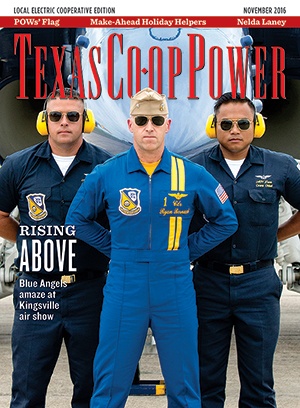As the Blue Angels’ F/A-18 Hornets rocket overhead at 400 mph, my eyes instinctively track the sleek Navy jets. My chest rumbles with the engines’ roar. During the two-day Wings Over South Texas Air Show at Naval Air Station Kingsville, military jets, nimble aerobatic planes and vintage flying machines fill the skies.
On the ground, crews of restored World War II planes and operational aircraft of the Navy, Coast Guard and Air Force welcome the questions of the curious, the enthralled and the reminiscing veterans. The thrill and glory of flight attract about 60,000 people daily to the free event, sponsored in part by Nueces Electric Cooperative.
At this air show and the 30 others held in Texas each year, captivated crowds gawk as planes and their pilots defy gravity, like winged gods of mythology. Planes spiral, plunge and tumble, dancing across the sky followed by trails of biodegradable smoke.
NAS Kingsville trains half of the Navy’s carrier-based pilots. The field, established in 1942, receives enthusiastic community support. At the 2016 air show in April, Will Selby remembers recess when he was a kid in Kingsville. “The low-flying jets would vibrate the leaves off the trees, but I loved to see the planes overhead,” he says.
The aerial show opens with the Army’s Special Operations Command Black Daggers parachute demonstration team, whose canopy parachutes zigzag like wind surfers across the sky. Precision flying at its finest takes “center sky” as Rob Holland, world champion freestyle aerobatic champion, flies upside down, and performs hammerhead turns and inside tumbles. The Twin Tigers team glides into lyrical loops while America the Beautiful plays, outlining a heart with their smoke trails. Flying a vintage Great Lakes biplane, Paul Fiala, former chief pilot for King Ranch, is a hometown favorite as he evokes the barnstormers of a bygone era. “Flying a biplane is like holding on to an umbrella in the wind,” says announcer Matt Jolley. “Paul flies to inspire the next generation of aviators.”
Even novices begin to recognize the four-point hesitation roll, the barrel roll, the snap roll and the dramatic knife-edge pass (with one wing pointed straight at the ground). All these maneuvers sustain the illusion that flying is magical.
When air-raid sirens wail, planes emerge from every direction through black smoke and flames as the planes and pilots of the Commemorative Air Force re-enact the day of infamy, the attack on Pearl Harbor. Planes from the Tora! Tora! Tora! air show depict the chaos of air combat and the fog of war, brought to terrifying life as bombers simulate dropping bombs on Pearl Harbor, and A6M Zeros in Japanese livery fly repeated strafing runs over the field to a soundtrack of machine-gun fire and explosions.
“It’s a living history lesson,” says Gordon Webb, who heads the CAF pyrotechnic team that stages the special effects. “It’s not meant to glorify war. We honor those who served and continue to serve.” He directs the volunteers and keeps them on script while they use commercial explosives and gasoline for the re-enactment.
Excitement for the Blue Angels’ performance builds as the C-130 Hercules affectionately known as “Fat Albert,” which carries the Blue Angels ground team to air shows, lifts from the runway in a 45-degree climb—astounding for such a hefty plane. The U.S. Marine Corps pilot tilts her gleaming white, yellow and blue plane toward the crowd.
With drill-team precision, the ground crew, wearing blue coveralls and yellow hearing protectors, readies six planes for takeoff. Four jets lift off in a tight diamond formation. That’s the beginning of a ballet of athletic, muscular planes performing diamond rolls, turns and what looks like crack-the-whip at high speeds. Known for their close formations, the Blue Angels often fly only 18 inches apart at 350–500 mph. The sight is heart-stoppingly beautiful. When the planes separate, their smoke trails resemble a graceful fountain.
The roar of the crowd is drowned by the engines pushing the 30-year-old airplanes to their limits. Now I see why guys adopted the term “wingman” for buddies who can be trusted.
The performance continues after the Blue Angels return to earth, as the ground crew secures the planes with equal finesse. The pilots climb out, shake hands with the crew and march off in formation. Watching the crew tending to the planes, I gasp when one man dives headfirst into a jet’s air scoop. That is called “duct diving,” I find out, and he’s checking for debris and fluids that could block the intake.
Throughout the day, the taxiway of NAS Kingsville bustles with crowds wandering past displays of vintage and active-duty aircraft, recruiting activities and vendors. In the shade of aircraft wings, families picnic, nap and photograph the planes. Bill Fier of the CAF helps me cross the wing of a P-39 and step inside the cockpit, where I straddle the flight control console.
Admitted air show groupie John Rodriguez tells me he brought his 8-year-old son Jaiden from Harlingen to share a love of planes that began when he was Jaiden’s age. I inch into the cockpit of a vintage B-25 Mitchell bomber, the plane my dad did his pilot training in 64 years ago. But can I squirm down the tunnel to the nose gunner section? I leave that to the more agile.
Visitors crawl into the Coast Guard’s orange-and-white MH-65 Dolphin helicopter and talk to the crew, which includes a rescue swimmer. “This is awesome. I want to be in the Air Force,” says Robert Rios, sitting next to me at the chopper’s controls. The Corpus Christi high school senior says he fell in love with planes while attending Wings Over South Texas Air Shows like the one today.
After their twice-daily jumps, members of the Black Daggers repack their black parachutes at the Army recruiting display. They invite fascinated kids to help them keep the billowing nylon under control as they meticulously compress the fabric, align the cords and squeeze it all into a compact backpack, ready to jump again.
The Air Force Performance Lab entices teens and adults with touch-screen flight simulators and timed games that promise to “test your skills, smarts and wits to see if you have what it takes.” Outside, cheered on by friends, young men and women do chin-ups. The wind spins the turbines of the huge C-17 cargo plane that has flown in from Travis Air Force Base in California. Eavesdropping on the pilot chatting with naval aviation cadets about flying is like listening to a foreign language.
I turn around to watch a formation barrel roll, a plane in a flat spin and another one hovering like a hawk. The Blue Angels staff, which includes specialists in videography, logistics and aviation medicine, walk around talking with the public and posing for selfies. The pilots emerge to sign plane posters and miniature flight helmets.
Is it my imagination that everyone seems to stand up a little straighter around these servicemen and women? The air show, after all, does more than demonstrate precision flying: It reminds me that we live in the home of the free because of the brave.
——————–
Eileen Mattei, a member of Nueces and Magic Valley ECs, lives in Harlingen.
